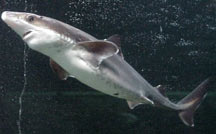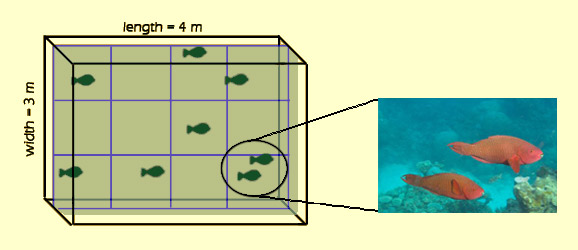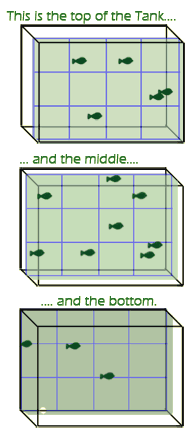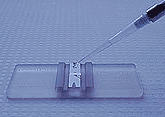 Counting big things
Counting big things
When the new owner, L. J. Silver, took over the Spectacular, its main attaction (wait for it) was a single tank with a gray dogfish shark circling endlessly through a school of parrotfish. Which you could hardly see on account of the algae already mentioned.
After a few abortive attempts to quantify algae, Silver decided to get his intern to count the parrotfish instead. After all, there weren't so many of them, so the intern (Nemo) could just look at the tank and start counting. But to make things easier, Nemo drew a grid on the bottom of the tank. That way he could count systematically, and avoid double-counting, or missing any fish.


For example, in the tank above, Nemo counted 8 fish. So far so good, but there's a problem. Nemo couldn't actually see see all the way through the tank at once (gunky water, remember?) so he had to go layer by layer.
The tank is 80 cm deep, and Nemo used lights to focus on one layer at a time -- the top layer, the middle layer, and the bottom layer -- as in the pictures on the right.
Once he had counted all the fish in the tank, Nemo could use that and the volume of the tank, to figure out the density of fish (or, fish per cubic meter). We'll help him do this on the next page.
 But what does this have to do with hemocytometers??!!
But what does this have to do with hemocytometers??!!
Glad you asked (or didn't, but at least you're reading this, right?) A hemocytometer is basically a fancy counting tray. The organisms are suspended in water, and there is a grid to help you get the count right. In addition, you have to get used to only being able to count one layer at a time, because microscopes have a limited range of focus. So really, we're just practicing skills at the macroscale, and we'll move to micro pretty soon.
photo credits: shark | parrotfish | hemocytometer
Copyright University of Maryland, 2007
You may link to this site for educational purposes.
Please do not copy without permission
requests/questions/feedback email: mathbench@umd.edu